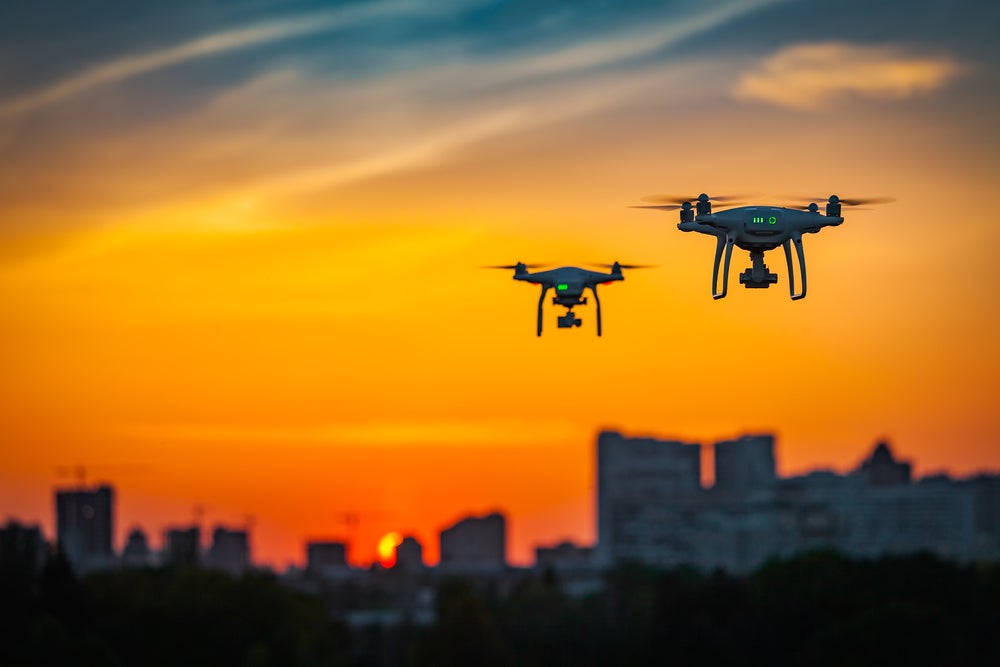In the realm of healthcare, every minute counts, often making the distinction between life and death. Enter drones, or more formally, unmanned aerial vehicles, which are revolutionising healthcare by facilitating the delivery of crucial supplies such as blood samples, medications, and first-aid equipment to remote locations with unprecedented speed and efficiency.
While the potential benefits of medical drone deliveries are undeniable, the US has been notably slow to embrace this transformative technology. Will this reluctance persist, or are we on the brink of a paradigm shift?

Why medical drone deliveries make sense
Companies like Zipline, Matternet, and Wing are leading the charge in showcasing the tangible advantages of medical drone deliveries. These benefits include:
- Enhanced Access: Drones circumvent the limitations imposed by traditional infrastructure, particularly benefiting rural and underserved communities by bridging the gap between remote populations and essential healthcare services.
- Reduced Delivery Times: By transforming lengthy journeys into swift aerial flights, drones expedite the delivery of critical supplies, thereby enhancing patient care, cutting costs, and improving operational efficiency.
- Facilitation of In-home Healthcare: With an ageing population driving the demand for in-home medical services, drones offer a convenient solution by enabling the seamless delivery of prescriptions and medical equipment directly to patients’ doorsteps.
- Macroeconomic Advantages: The establishment of comprehensive medical drone delivery networks holds the potential to stimulate economic growth within the communities they serve, necessitating investments in infrastructure and creating job opportunities.
- Environmental Sustainability: Drones operate emissions-free, contributing to a reduction in carbon footprint and aligning with sustainability goals.
The future is now… just not in the US
While medical drone deliveries have been a reality in various countries for several years, the US has lagged behind in embracing this innovation. However, progress is underway, with companies, such as Zipline expanding their operations into US markets and industry giants such as Amazon and Walmart piloting similar initiatives. Nevertheless, regulatory hurdles loom large.
Navigating the FAA’s Part 135 Certification
As the regulatory authority overseeing airspace operations, the Federal Aviation Administration (FAA) plays a pivotal role in the integration of drones into national airspace. However, the stringent requirements of the Part 135 Air Carrier Certification, originally designed for manned cargo carriers, pose significant challenges for drone operators. The arduous certification process, coupled with the need for waivers to accommodate drone-specific considerations, creates a formidable barrier to entry, limiting the number of companies with Part 135 certification to a select few.
Beyond the FAA: legal complexities
While the FAA bears a share of responsibility for the sluggish growth of the American drone delivery market, the landscape is further complicated by a patchwork of state and local laws governing drone operations. These inconsistencies, coupled with legal uncertainties surrounding issues such as privacy and property rights, hinder the scalability of drone delivery programs and deter investment in the sector.
How well do you really know your competitors?
Access the most comprehensive Company Profiles on the market, powered by GlobalData. Save hours of research. Gain competitive edge.

Thank you!
Your download email will arrive shortly
Not ready to buy yet? Download a free sample
We are confident about the unique quality of our Company Profiles. However, we want you to make the most beneficial decision for your business, so we offer a free sample that you can download by submitting the below form
By GlobalDataThe economics of saving lives
While the benefits of medical drone deliveries in improving healthcare outcomes are evident, the economic viability of such ventures remains uncertain. While success stories abound, particularly in developing countries, profitability in the US context hinges on many factors, making it a complex equation to solve.
Public acceptance: a critical factor
Ultimately, the success of medical drone deliveries hinges not only on regulatory and technological advancements but also on public acceptance. While early feedback from small-scale programs in the US has been encouraging, widespread acceptance remains a challenge. Demonstrating the tangible benefits of drone technology in saving lives and enhancing community well-being will be instrumental in overcoming this hurdle.
Charting a course forward
As we navigate the complexities of regulatory frameworks and public perception, one thing is clear: the potential of medical drone deliveries to revolutionise healthcare is undeniable. While challenges persist, there are signs of progress, with regulatory reforms and industry initiatives paving the way for a future where drones play a pivotal role in enhancing healthcare accessibility and efficiency. As we continue this journey, it is imperative that stakeholders collaborate to address regulatory barriers, foster innovation, and build public trust in the transformative power of drone technology.
Zach Dougherty is an attorney at 3i Law
Financing the drone evolution: sky-high challenges and opportunities









Related Company Profiles
Wingstop Inc
Amazon.com Inc
Walmart Inc